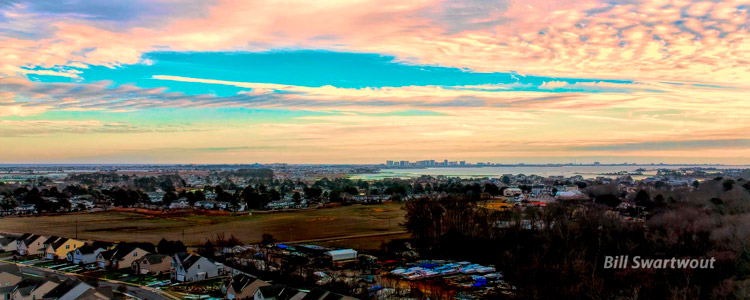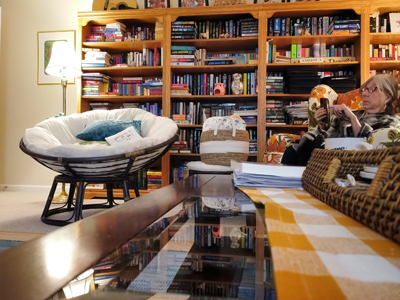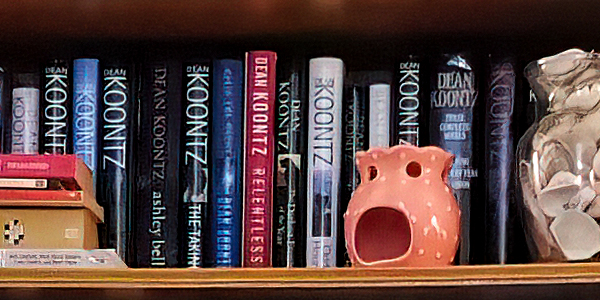Attempting a drone range test with my DJI Mini SE…
Well, not really, I was flying to catch a sunrise over Little Assawoman Bay and the Atlantic Ocean.
More seriously, I was flying the drone at sunrise in our back yard – to catch early morning sky colors – and looked up to see a waning gibbous moon. I moved the drone a bit south and east (at 200 ft.) to catch this silhouette.
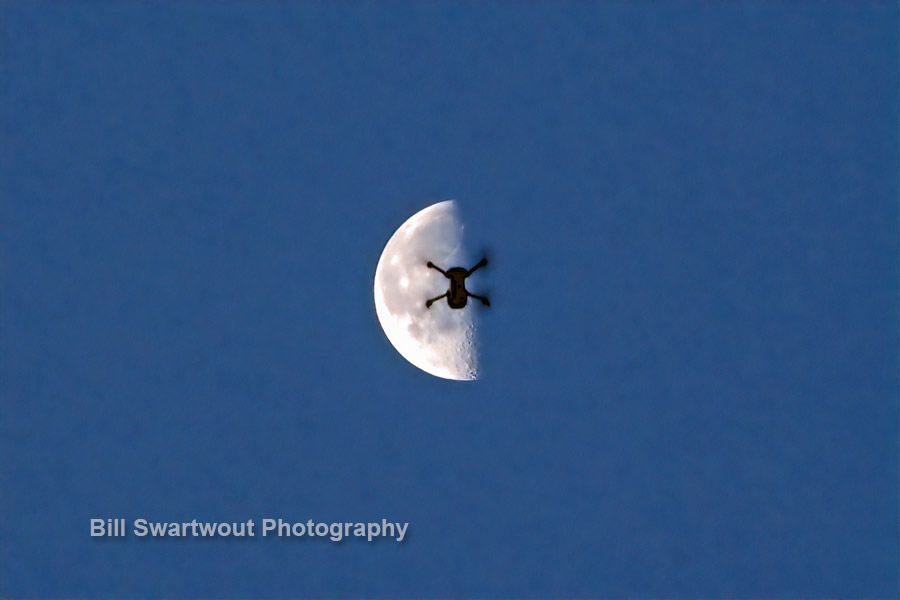
Well, I didn’t catch it at first because all I had for a camera was my cell phone. While the best camera to have is “the one you have with you” – I also realized I need a bit more reach with a telephoto lens than what my iPhone 12 could provide. It was an interesting enough image (to me) that I thought it might make a cool photograph. In this particular case the “best camera to have” was in my office upstairs in our house.
I landed the drone so I could go inside to grab my Olympus E-M10 Mark IV and mounted my Olympus 75-300 f/4.8-6.7 zoom lens. Techies might be interested in the EXIF data: 228mm focal length; 1/200 sec; f/22; ISO 1600; Aperture priority; center-weighted metering.
Oh, yes, here is the morning sunrise that prompted the silhouette image of My Mini and the Moon. Yes, the contrast and colors have been “boosted” a little – to make the morning flight on Saturday, September 17 a bit more worthwhile.
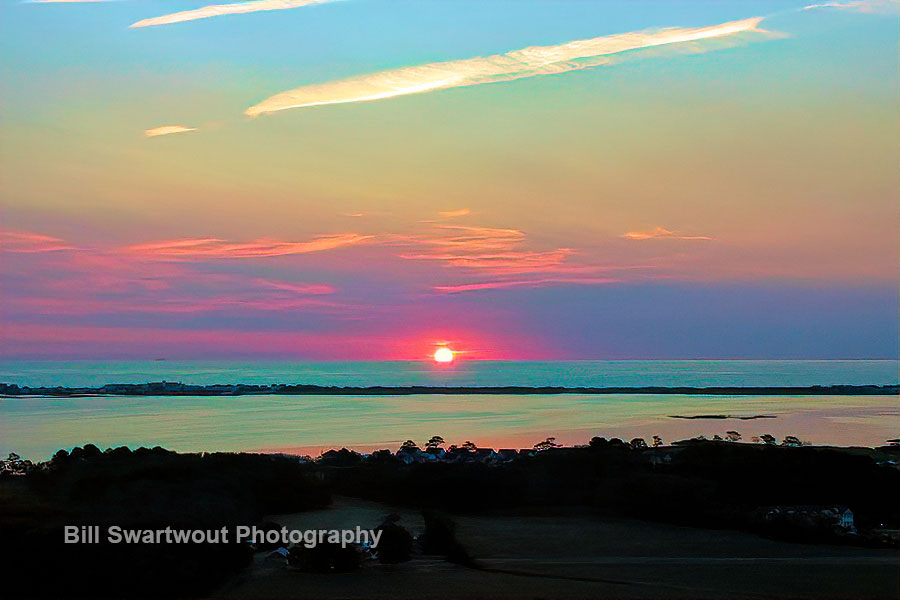
I’m sure I will be asked about maintaining VLOS (Visual Line of Sight) which is, by law, defined as normal vision without the use of any extra optics like binoculars or a spotting scope. A long, long time ago I learned (and got used to) peering through the viewfinder of a camera while keeping both eyes open. Yup – believe it or not!
Don’t believe that works? Try a Google Search and you might find something like this: “Most photographers close one eye when looking through the viewfinder, but keeping the other open allows you to remain aware of your surroundings. It means you can see things coming into your frame, keeping you ready to press the shutter at exactly the right moment.“

